Published
- 14 min read
Top Vercel Alternatives for Developers and Teams in 2025

Introduction
Vercel has become one of the go-to platforms for developers building and deploying modern frontend applications. Its seamless integration with frameworks like Next.js and React has made it a favourite for startups and freelancers who want to deploy quickly without worrying about infrastructure.
However, as projects grow, developers often hit the limits of Vercel’s flexibility. Many teams need more backend support, cost transparency, and infrastructure control than a purely serverless setup allows. That is why developers are increasingly looking for Vercel alternatives that combine ease of use with scalability and automation.
This blog explores the best Vercel alternatives in 2025 and how Kuberns, a smart AI-powered deployment platform, brings the same simplicity with far greater control, scalability, and cost efficiency. Learn more in What Is Kuberns: The Simplest Way to Build, Deploy, and Scale Full-Stack Apps.
1. Kuberns: The AI-Powered Alternative to Vercel
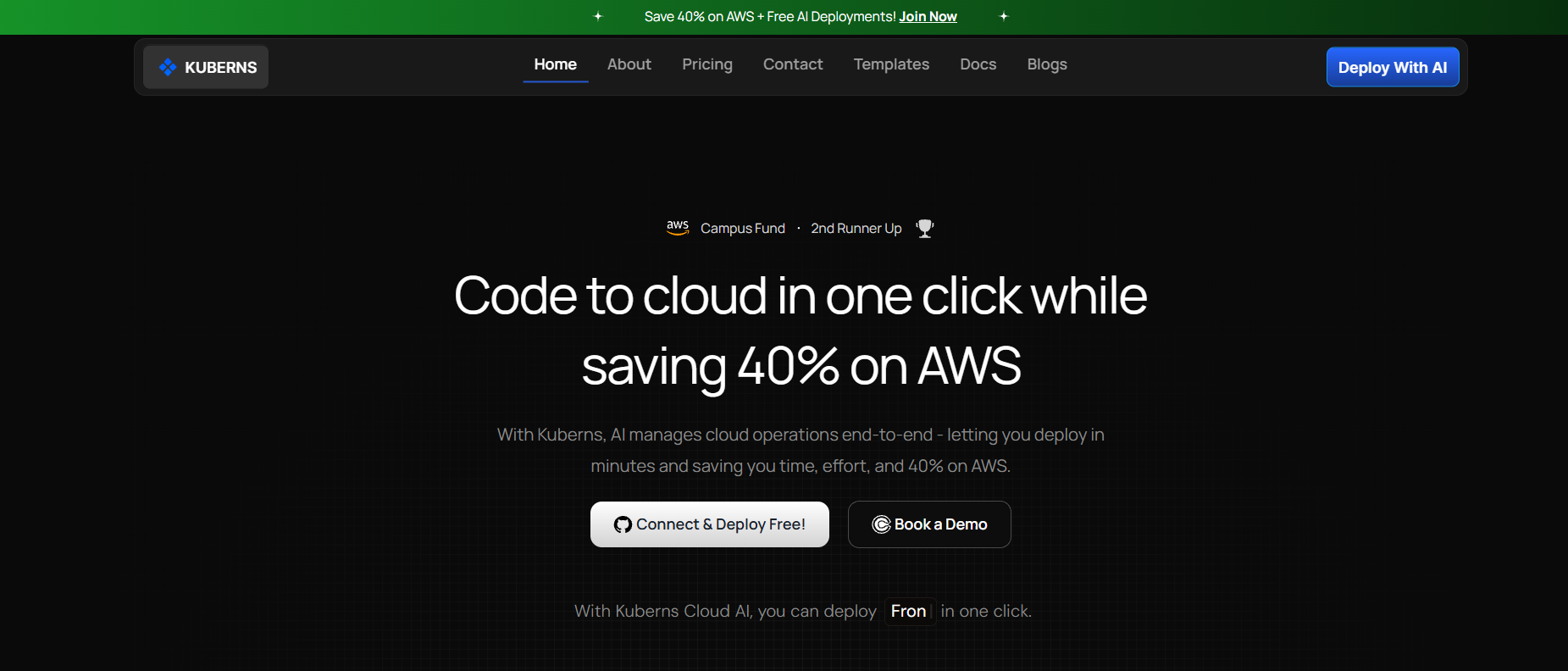 Kuberns is transforming how developers deploy, scale, and manage modern applications. It delivers the same simplicity that makes Vercel popular, but with the added power of AWS infrastructure, AI automation, and cost optimization built in from the start.
Kuberns is transforming how developers deploy, scale, and manage modern applications. It delivers the same simplicity that makes Vercel popular, but with the added power of AWS infrastructure, AI automation, and cost optimization built in from the start.
Unlike platforms limited to frontend hosting, Kuberns supports full-stack deployments including APIs, microservices, and containerized workloads without requiring any manual DevOps setup. With a single Git connection, you can deploy, monitor, and scale your application automatically.
Why Developers Choose Kuberns
- Full-stack flexibility: Deploy frontend, backend, or containerized applications directly from GitHub or GitLab in one click.
- AI-driven automation: Kuberns automatically handles provisioning, scaling, monitoring, and resource optimization for peak performance.
- Up to 40% lower AWS costs: By intelligently optimizing infrastructure usage, Kuberns helps teams save significantly while maintaining enterprise-grade reliability. You can see exactly how teams achieve this in Cut AWS Bills by 40% Without Compromising on Security or Features.
- Zero DevOps complexity: Built-in CI/CD pipelines, observability, real-time logs, and alerts mean you spend less time configuring and more time building.
- Enterprise-grade reliability: Hosted across multiple AWS regions for global uptime, scalability, and security compliance.
Kuberns is purpose-built for developers and teams who want cloud power without the overhead of managing it. It automates the entire lifecycle from deployment to scaling and cost optimization making it ideal for startups, agencies, and enterprises alike.
To see how Kuberns streamlines full-stack deployment, read What Is Kuberns: The Simplest Way to Build, Deploy, and Scale Full-Stack Apps.
2. Netlify
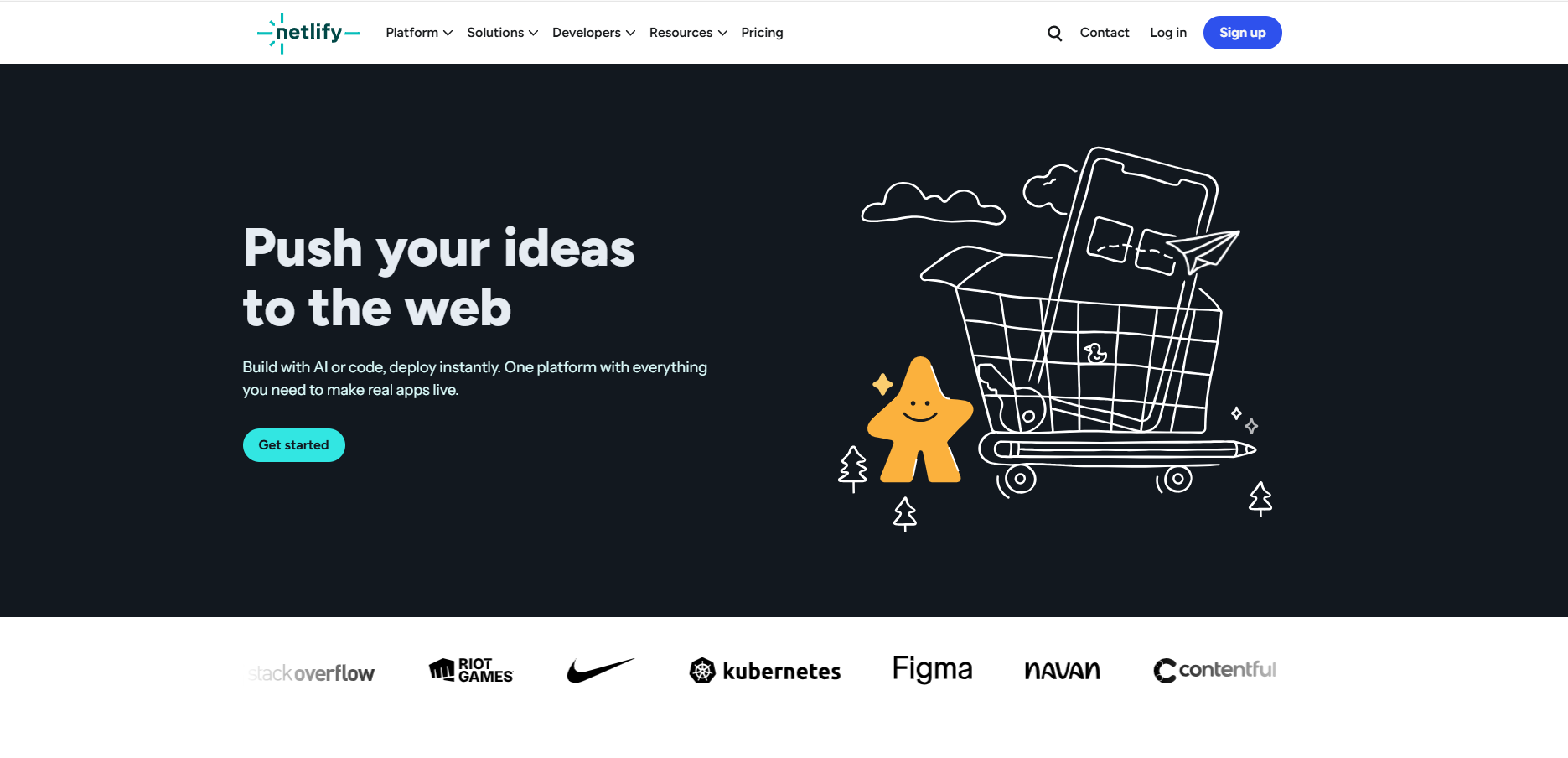 Netlify is one of the most popular hosting platforms for static and JAMstack applications. It automates the process of building, deploying, and hosting sites directly from your Git repository. Developers love Netlify for its simplicity, built-in serverless functions, and fast global CDN.
Netlify is one of the most popular hosting platforms for static and JAMstack applications. It automates the process of building, deploying, and hosting sites directly from your Git repository. Developers love Netlify for its simplicity, built-in serverless functions, and fast global CDN.
Why Teams Choose Netlify
- Git-based CI/CD that automates builds and deployments.
- Global edge network for optimized content delivery.
- Serverless functions for lightweight backend tasks.
- Built-in form handling, split testing, and identity features for static sites.
Best For
Small teams, marketing websites, portfolios, documentation sites, and frontend projects that do not require complex backend architecture.
Limitations
While Netlify’s workflow is excellent for frontend-focused projects, it lacks full-stack flexibility. Scaling complex applications with databases or persistent backends can become challenging.
If you are outgrowing static hosting and need a smarter alternative with full-stack and automation capabilities, check out Best Netlify Alternatives in 2025.
3. Render
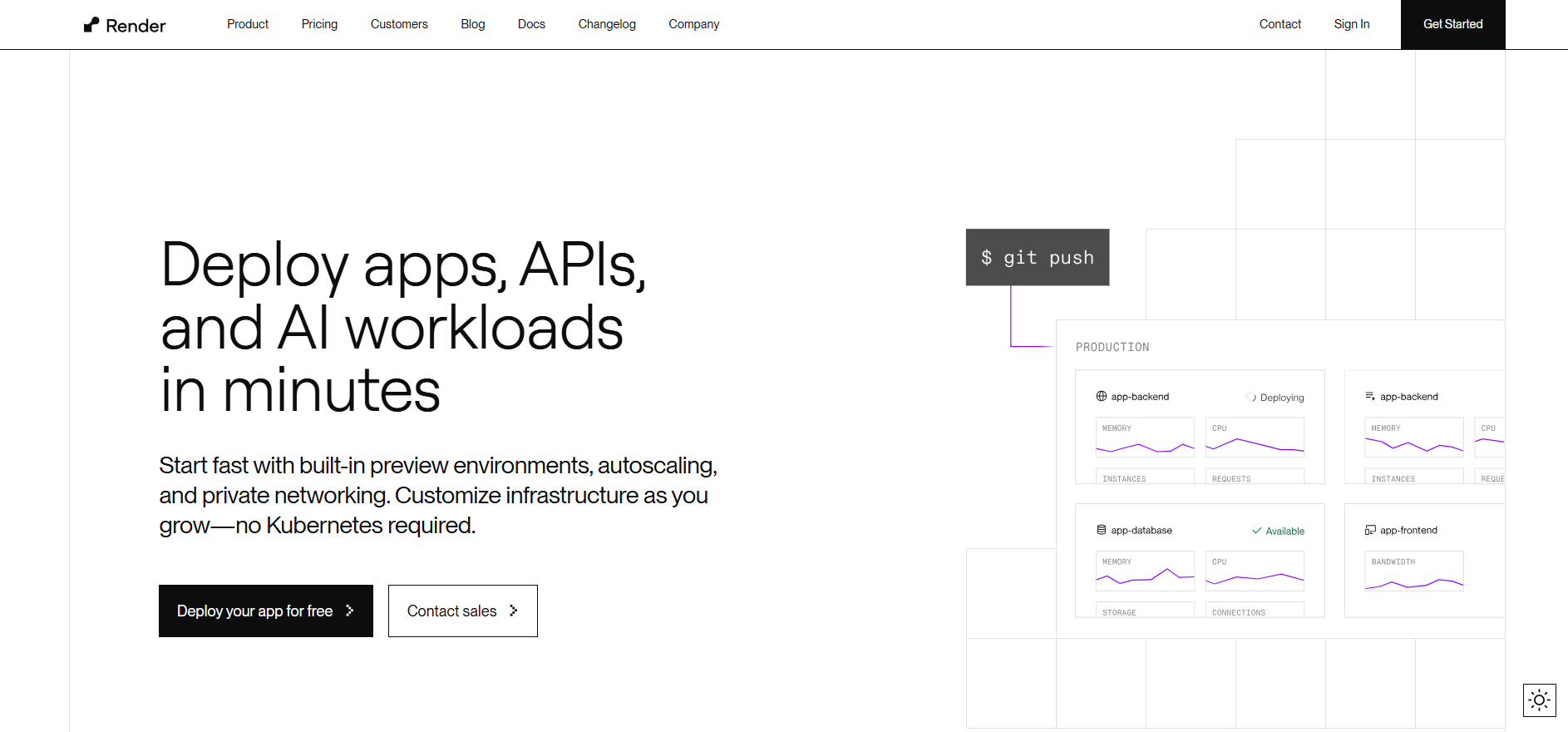 Render offers a unified cloud platform for deploying both frontend and backend applications. It supports web services, databases, cron jobs, background workers, and static sites — making it a great choice for developers who want simplicity without being limited to serverless architecture.
Render offers a unified cloud platform for deploying both frontend and backend applications. It supports web services, databases, cron jobs, background workers, and static sites — making it a great choice for developers who want simplicity without being limited to serverless architecture.
Why Developers Choose Render
- Supports full-stack deployments with minimal setup.
- Managed databases, SSL, custom domains, and autoscaling built in.
- Continuous deployment from GitHub or GitLab.
- Docker support for containerized applications.
Best For
Teams looking for an easy-to-use, all-in-one platform for deploying applications without deep infrastructure management.
Limitations
Render’s automation is limited to basic scaling and deployment tasks. It lacks AI-powered optimization and cost intelligence, meaning teams may overspend on unused resources as projects scale.
For a detailed comparison, explore Render vs Kuberns to see how Kuberns provides greater automation, scalability, and AWS-backed performance.
4. Fly.io
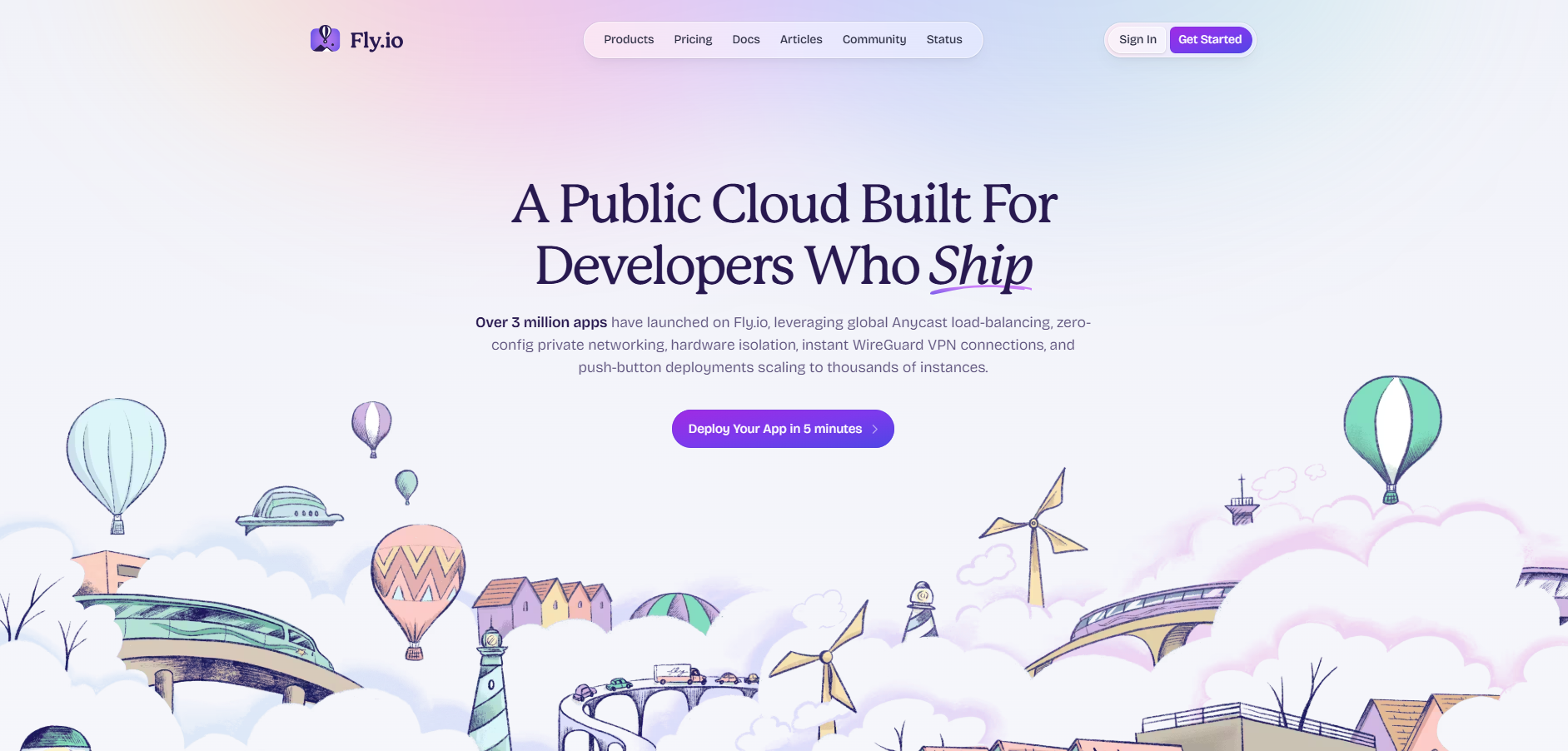 Fly.io takes a different approach to cloud deployment by focusing on edge computing. It allows developers to run applications closer to users for lower latency and faster response times. With Fly.io, every deployment automatically becomes global.
Fly.io takes a different approach to cloud deployment by focusing on edge computing. It allows developers to run applications closer to users for lower latency and faster response times. With Fly.io, every deployment automatically becomes global.
Why Developers Choose Fly.io
- Run applications in multiple geographic regions simultaneously.
- Ideal for latency-sensitive or real-time workloads.
- Built-in load balancing and automatic failover.
- Scales horizontally without a traditional centralized server.
Best For
Developers who need global edge deployment and are comfortable managing distributed infrastructure.
Limitations
Fly.io requires custom architecture design to utilize its edge-first model effectively. It is better suited for advanced developers who have experience managing stateful workloads across regions.
5. DigitalOcean App Platform
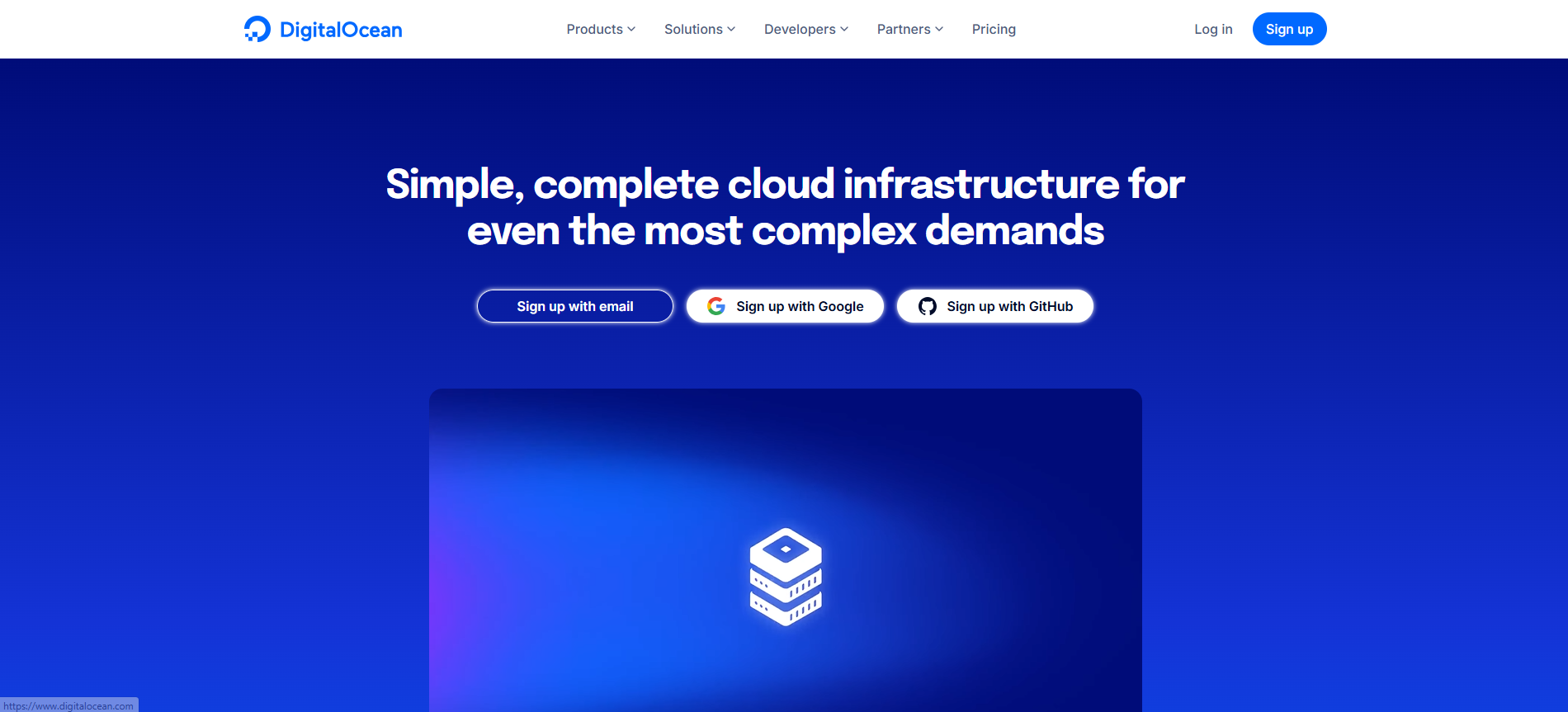 DigitalOcean App Platform is a simple yet powerful PaaS solution that lets you deploy web apps, APIs, and static sites directly from your Git repository. It is designed for developers who want predictable pricing and an easy path to scale without complex setup.
DigitalOcean App Platform is a simple yet powerful PaaS solution that lets you deploy web apps, APIs, and static sites directly from your Git repository. It is designed for developers who want predictable pricing and an easy path to scale without complex setup.
Why Developers Choose DigitalOcean App Platform
- Automatic Git-based deployment for web apps and APIs.
- Integrated load balancing and horizontal scaling.
- Managed databases and object storage.
- Flat-rate pricing that makes cost forecasting simple.
Best For
Startups, small SaaS teams, and individual developers who value simplicity, transparency, and ease of management.
Limitations
While DigitalOcean App Platform is easy to use, it lacks deep automation, predictive scaling, and AI-based cost optimization. Larger workloads often require manual intervention to maintain performance and efficiency.
To learn how platforms like Kuberns provide more intelligent scaling and monitoring, see our full guide on Best DigitalOcean Alternatives for Startups and Solo Developers.
6. AWS Amplify
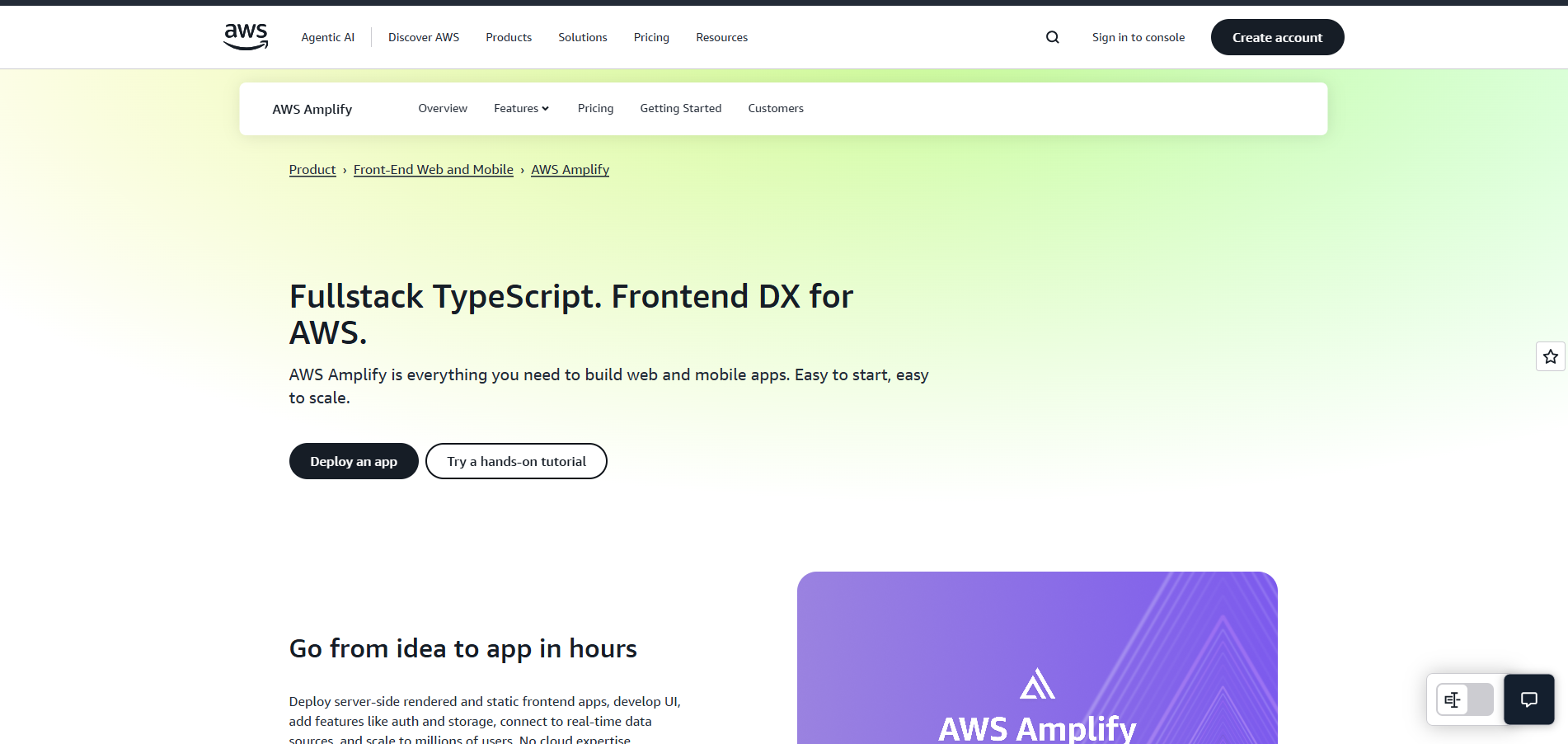 AWS Amplify is Amazon’s frontend and mobile-focused framework for building cloud-powered applications. It provides hosting, authentication, APIs, and integrations with services like CloudFront, S3, and Lambda. It is a great option for developers already familiar with the AWS ecosystem.
AWS Amplify is Amazon’s frontend and mobile-focused framework for building cloud-powered applications. It provides hosting, authentication, APIs, and integrations with services like CloudFront, S3, and Lambda. It is a great option for developers already familiar with the AWS ecosystem.
Why Developers Choose AWS Amplify
- Deep integration with AWS services such as DynamoDB, Cognito, and AppSync.
- Full control over backend APIs, databases, and user authentication.
- Scalable infrastructure that grows with your application.
Best For
Developers or organizations already running workloads on AWS who want a native way to host frontend applications and connect to AWS services.
Limitations
AWS Amplify’s flexibility comes at the cost of complexity. Managing IAM roles, scaling configurations, and API gateways manually can be time-consuming.
Kuberns, on the other hand, offers the same AWS reliability with simplified management. It automates provisioning, scaling, and optimization across AWS regions, eliminating the need for manual setup.
To understand how Kuberns helps teams save up to 40% on AWS infrastructure, read Cut AWS Bills by 40% Without Compromising on Security or Features.
When Should You Move Beyond Vercel?
Vercel is excellent for rapid frontend deployment, especially for Next.js or React-based applications. However, as your project scales and your requirements become more complex, its limitations start to show. You may reach a point where simplicity is no longer enough, and you need more flexibility, control, and cost visibility.
You might consider moving beyond Vercel if:
- Your application requires backend logic or APIs. Vercel’s serverless functions are useful but limited for persistent or high-throughput workloads.
- You need more control over infrastructure and regions. With Vercel, you cannot directly choose cloud regions or resource configurations.
- Your cloud bills are unpredictable. Serverless pricing can fluctuate based on execution time, concurrency, and cold starts, making cost estimation difficult.
- You want a unified dashboard for monitoring and scaling. Developers often need a more integrated view of performance, logs, and alerts.
- You plan to automate everything from deployment to optimization. For growing teams, manual configuration and separate tools quickly become a bottleneck.
If these challenges sound familiar, it may be time to consider Kuberns. It offers the same simplicity as Vercel but with AI-driven automation, cost optimization, and AWS-backed scalability.
You can see how both platforms compare feature by feature in Vercel vs Kuberns: Which Platform Fits Your Development Needs Better.
How to Choose the Right Alternative?
Finding the best Vercel alternative depends on your specific workload, scaling goals, and technical comfort. Each platform offers unique advantages, but the right choice balances flexibility, performance, and simplicity.
Here’s a structured way to decide:
- Identify your workload type
- Are you deploying static sites, full-stack apps, or containerized microservices?
- Full-stack and backend-heavy workloads often benefit from platforms like Kuberns that support end-to-end automation.
- Compare cost structures
- Decide between pay-per-use (serverless) or predictable monthly pricing.
- Look for platforms that include cost-optimization features to prevent overprovisioning.
- Evaluate automation capabilities
- Can the platform handle provisioning, scaling, and monitoring automatically?
- Platforms like Kuberns offer AI-driven automation that adjusts resources dynamically based on usage.
- Check for backend and integration support
- Ensure the platform supports APIs, databases, and persistent connections.
- Verify whether you can integrate third-party tools or your preferred CI/CD pipelines.
- Prototype and test
- Deploy a small project, monitor speed, uptime, and costs.
- Observe how easily the platform handles updates and scaling.
For a complete decision-making framework and deeper comparison between major IaaS options, explore How to Pick the Best IaaS Platform for Your Business Needs in 2025.
Final Thoughts
Vercel remains a great choice for lightweight and frontend-focused projects, but as your applications grow, you need a platform that evolves with your workload.
Kuberns is built to be that next step. It combines the global reliability of AWS, the intelligence of AI-powered automation, and the simplicity developers expect. Whether you are a solo developer, an agency, or an enterprise team, Kuberns helps you deploy faster, scale smarter, and spend less.
If you are ready to take control of your deployments without the DevOps complexity, visit Kuberns.com and see how easy cloud deployment can be.

Frequently Asked Questions (FAQ’s)
What is Vercel used for?
Vercel is a cloud platform that helps developers build, deploy, and scale modern web applications. It is especially popular for hosting frontend frameworks like Next.js, React, and Svelte with automatic builds and a global CDN.
Why look for Vercel alternatives in 2025?
While Vercel is great for frontend hosting, many teams outgrow it as they need backend control, predictable pricing, and more flexibility. Alternatives such as Render, DigitalOcean, and Kuberns provide better scalability, automation, and cost visibility for full-stack projects.
Which platform is better than Vercel for full-stack development?
Platforms like Kuberns and Render support both frontend and backend workloads, giving developers more freedom to deploy APIs, databases, and containerized apps without complex DevOps setups.
Is Netlify better than Vercel?
Netlify is an excellent choice for static or JAMstack websites, but Vercel is more tightly integrated with frameworks like Next.js. If you need backend or full-stack capabilities, consider modern alternatives listed in our Best Netlify Alternatives guide.
Can Vercel host backend services?
Vercel supports serverless functions, but these are limited for large-scale backend systems or persistent workloads. Platforms like Kuberns offer full backend hosting with containers, APIs, and AI-based scaling.
Which is the cheapest alternative to Vercel?
Platforms like DigitalOcean App Platform and Render provide transparent, flat-rate pricing. However, for teams optimizing AWS-based deployments, Kuberns can cut infrastructure costs by up to 40%.
How is Kuberns different from Vercel?
Kuberns provides an all-in-one deployment experience for both frontend and backend workloads. It automates provisioning, scaling, monitoring, and optimization while maintaining AWS reliability. For a full comparison, visit Vercel vs Kuberns.
What is the best platform for deploying full-stack applications?
Kuberns, Render, and DigitalOcean are excellent for full-stack deployment. Kuberns stands out for its AI-powered automation and ability to manage everything from code to scaling automatically.
Is AWS Amplify a good Vercel alternative?
Yes, AWS Amplify is suitable for developers already using the AWS ecosystem. However, managing configurations manually can be complex. Kuberns simplifies AWS deployment through one-click automation and monitoring.
Which Vercel alternative is best for startups?
For startups, cost efficiency and simplicity are key. Platforms like Kuberns and Render offer fast deployment, built-in scaling, and transparent pricing making them ideal for small teams that want speed and reliability.